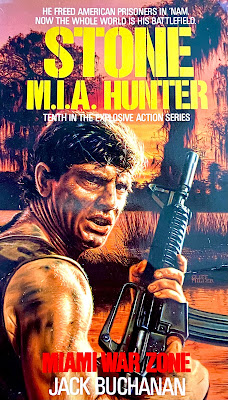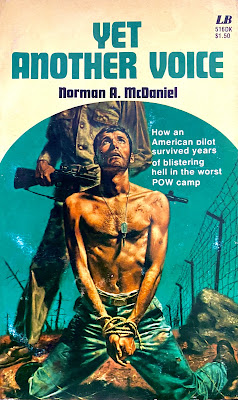I was honored when Stark House Press asked me to write the introduction for the 2022 edition of Lionel White's The Mexico Run and Jailbreak. I wanted to share that write-up with the Paperback Warrior readers and fans that didn't have an opportunity to buy the book. I hope you enjoy it. - Eric Compton"Lionel White: The Perfect Getaway"
All good things must come to an end. It’s a sentiment that may have been echoed by Lionel White (1905-1985) as he typed the last line of Jailbreak. This aptly titled prison break thriller proved to be White's last novel. It was published in the U.K. in 1976 by Robert Hale as The Walled Yard and in paperback as Jailbreak in the U.S. by the lowly, scrupulous Manor Books. It was a step backward from White's prior, much more prestigious American publishers like New York Dutton (Penguin) and Fawcett Gold Medal. Manor Books was mostly reserved for a variety of disposable, low-brow team-commando, western and vigilante men's action-adventure titles. Not something from the esteemed mind and talented fingertips of Lionel White.
In reading Jailbreak, and his late career entry, 1974's The Mexico Run, I questioned if the New York author realized this was the end of the literary road? Can authors sense when the creativity think-tank has become dry? It's hard to imagine that White, an astute, literary powerhouse could have been that obtuse. Could White have theoretically known his career was nearing the end years before drafting Jailbreak? Was that the reasons for the creative change from heist-fiction to something entirely different?
Like other authors that either become complacent with their own style or fail to meet their own expectations, Lionel White became aware that he had written himself into a corner. Beginning with his 1952 novel, Seven Hungry Men!, published as a Rainbow Digest and later re-printed by Avon as Run, Killer, Run, White launched a successful career that seemingly elevated, or at the very least defined, what we now consider heist-fiction, or simply “caper novels.” White's classic novels, which were influences for Donald Westlake's own revolutionary heist-fiction series Parker (written under the pseudonym Richard Stark) and critically-acclaimed writer and director Quentin Tarrantino, featured anti-heroes planning extensive crimes like robbery or hijacking. These books were nearly step-by-step blueprints showcasing not only the scheming and strategics of committing the crime, but also the mental capacities criminals possess.
White's caper novels possessed an uncanny transcendence from real-world crimes to printed page. These bank robberies, diamond heists, kidnappings and hijackings come to life through supreme, suspenseful storytelling that forces readers to sympathize, cheer, or jeer these anti-heroes in their pursuit of fortune and high-level criminality. It is these types of stories that calculatedly blend the criminal elements, emotional anguish, and melodrama with unexpected levels of violence and unrest to create the ultimate, satisfying crime-fiction formula.

White's other heist novels were equally as entertaining, including – The Big Caper (1955), Operation -Murder (1956), Hostage for a Hood (1957), and Steal Big (1960). Due to his sheer perfection of inventing riveting fictional crimes and the compelling people who plan and execute them, White found his niche, but the ability and freedom to tell a different type of story was confounded by reader and publisher requests for more heist-fiction. White was trapped in his career trajectory, but wanted to explore his literary boundaries.
One of crime-fiction's overused plots was the “innocent man on the run” routine. Authors like Henry Kane and Day Keene both recycled the concept, and in 1957 Lionel White utilized the idea for his novel The House Next Door. He used it again in 1962's Obsession, the basis for the French film Pierrot Le Fou (Pete the Madman). Both novels saw White exploring fictional ideas outside of his moneymaking wheelhouse. Other non-heist novels like The Merriweather File (1959), Rafferty (1959) and Lament for a Virgin (1960) are all well-received by crime-noir readers, but failed to meet the high expectations of White's loyal heist-fiction fans.
By the late 1960s, White's collective body of work was impressive and studded with high-shelf heist-fiction. But, the idea of continuing to write these types of stories for another decade was probably creating some personal angst. I liken it to the same problem that bestselling western author Louis L'Amour was confronting.
In 1974, after 25+ years of range wars, cattle drives, brutish gunfighters, and frontier Indian skirmishes, L'Amour had become complacent with telling the same tales and decided to switch creative direction. Despite his publisher's wishes, L'Amour ended his career writing early American history novels about a fictional Sackett family arriving in North America in the early 1600s as well as a high-adventure, modern novel called Last of the Breed, set in the Soviet Union. In late interviews, L'Amour had plans for more books set in America's Revolutionary War and Civil War.

Following suite, White's very different novel The Mexico Run was published in 1974 by Fawcett Gold Medal. It proved that the author, while not crafting traditional heist-fiction, was still edgy and entertaining. By exploring the more modern, violent savagery of drugs and human trafficking, White was able to explore different storytelling during the sunset of his career. While it will never be mistaken for White's career best, The Mexico Run is a fresh and enjoyable prose with a remarkable twist ending that hits like a lead pipe. Instead of small town banks, urban jewelry stores, or vulnerable vehicular settings, White's workman hero frequents seedy Mexican motels and abandoned coastal villas. The narrative is devoid of robbery or hijacking, the nearly mandatory staples of White's career. The Mexico Run delves into drug cartels and runners (mules), and has a different type of heist, this one involving illegal entrance in and out of U.S./Mexican Customs.

White's last streak of publications included The Mind Poisoners (1966), which was an installment of the long-running Nick Carter: Killmaster series of spy adventures. Other non-heist novels included The Crimshaw Memorandum (1967), Death of a City (1970), and A Rich and Dangerous Game (1974).
Both The Mexico Run and Jailbreak, represented here in this Stark House Press twofer, represents White's honesty with himself. Both of these novels are good enough to compete with his contemporaries, and in some author lists, would even foster career bests. He left behind a legacy of phenomenal crime-fiction literature, what many critics, scholars and fans would consider some of the best heist-fiction of all-time.
Sensing his career's downward slope, Lionel White retired from writing shortly after Jailbreak's release. But, he did it his way and purged all of his remaining creativity in those final years. He told the stories he wanted to tell, broadened his literary approach, and refused to be cornered. He successfully cracked the safe and made the perfect getaway.
Eric Compton
St. Augustine, FL
July, 2022






















